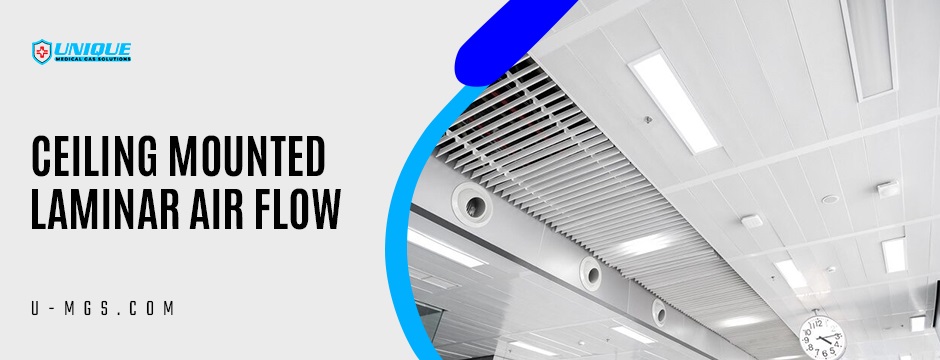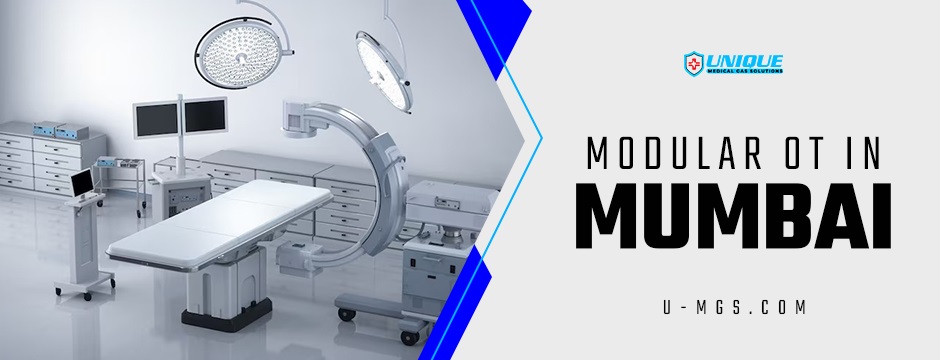Infection control is one of the most critical aspects of modern healthcare, directly influencing patient safety, surgical outcomes, and overall hospital efficiency. With the rise of multidrug-resistant organisms and the increasing complexity of medical procedures, hospitals are under more pressure than ever to maintain the highest levels of hygiene. One powerful technology that has transformed infection prevention is the ceiling mounted laminar air flow (LAF) system.
Unlike conventional ventilation systems, laminar air flow systems are specifically designed to create an ultra-clean environment by supplying a continuous stream of filtered air in a unidirectional pattern. When installed on ceilings above critical areas such as operating rooms, ICUs, laboratories, and sterile processing departments, these systems minimise airborne contaminants, reduce infection risk, and improve overall patient safety. In this blog, we will explore why ceiling-mounted laminar air flow systems are a cornerstone of infection control, how they work, their benefits, and why they remain the preferred choice in modern hospitals.

How Ceiling-Mounted LAF Systems Work?
The principle behind laminar air flow is simple but highly effective.
- Air Filtration – Outside air is drawn in and passed through pre-filters and high-efficiency HEPA or ULPA filters that remove up to 99.999% of particles as small as 0.3 microns.
- Uniform Distribution – Filtered air is discharged in a smooth, parallel (laminar) flow, usually downward from the ceiling, ensuring that contaminants are swept away from the sterile field.
- Controlled Environment – This continuous downward flow maintains positive pressure, preventing contaminated air from entering the protected zone.
By maintaining this sterile envelope, LAF systems significantly reduce the risk of surgical site infections (SSIs) and other airborne infections.
Why Hospitals Prefer Ceiling Mounted Laminar Air Flow for Infection Control?
Enhanced Patient Safety
The primary reason hospitals rely on LAF systems is their ability to dramatically reduce infection risks. In surgical theatres, even the smallest airborne contaminant can lead to post-operative infections, extended recovery periods, and higher healthcare costs. LAF systems minimise these risks by ensuring ultra-clean air conditions.
Compliance with Global Standards
Healthcare facilities must meet strict international guidelines such as ISO 14644 (Cleanroom Standards) and WHO recommendations. Ceiling-mounted LAF systems are engineered to comply with these benchmarks, giving hospitals confidence in meeting accreditation and regulatory requirements.
Protection for Healthcare Workers
Not only do patients benefit from sterile air, but surgeons, nurses, and other staff working in high-risk environments are also protected. Exposure to airborne pathogens, chemical agents, or fine particulates is minimised, ensuring safer working conditions.
Optimised Airflow Design
Ceiling Mounted Laminar air flow units provide better distribution compared to side-mounted or portable options. They deliver consistent, unidirectional airflow over the entire surgical field, minimising turbulence and preventing re-circulation of contaminants.
Energy Efficiency and Space Utilisation
Since ceiling-mounted systems do not take up valuable floor space, hospitals can maximise room efficiency. Moreover, modern LAF units are designed to be energy-efficient, reducing operational costs while maintaining sterility.
Long-Term Cost Savings
Although the initial investment in ceiling-mounted LAF may be higher than standard ventilation systems, the long-term benefits include fewer infection-related complications, reduced patient readmissions, shorter hospital stays, and improved operational efficiency—all contributing to significant cost savings.
Applications of Ceiling-Mounted Laminar Air Flow in Hospitals
- Operating Theatres – The most critical application, ensuring sterile conditions for major surgeries like orthopaedics, cardiology, neurosurgery, and transplants.
- Intensive Care Units (ICUs) – Protect vulnerable patients with weakened immune systems from secondary infections.
- Laboratories & Cleanrooms – Maintains contamination-free environments for diagnostic testing, pharmaceutical research, and medical device preparation.
- Sterile Processing Departments – Ensures Modular OT in Mumbai remains contamination-free after sterilisation and before use.
The Science Behind Trust and Reliability
Studies have shown that laminar airflow systems significantly lower infection rates compared to turbulent ventilation. Hospitals that adopted ceiling-mounted LAF systems have reported reduced rates of surgical site infections, lower mortality rates, and improved recovery times. This evidence-based success has made LAF systems a cornerstone of modern infection control protocols worldwide.
Furthermore, hospitals trust ceiling-mounted solutions because they are durable, easy to integrate with modular OT designs, and customizable for different medical applications. Their reliability, backed by decades of engineering innovation, ensures consistent protection against airborne pathogens.
Challenges and Future Innovations
While laminar air flow systems are highly effective, they require proper design, regular maintenance, and periodic validation to perform optimally. Hospitals must ensure that filter replacements, airflow velocity checks, and pressure monitoring are consistently carried out.
Future innovations in LAF technology may include integration with smart monitoring systems, AI-driven contamination alerts, and energy-saving adaptive controls. Such advancements will make ceiling-mounted LAF even more efficient, sustainable, and indispensable in hospital infection control strategies.

Final Thoughts
Infection control remains one of the most pressing priorities in healthcare, and Ceiling Mounted Laminar Air Flow systems have proven themselves as reliable guardians of patient safety. By creating sterile, contamination-free zones, they not only prevent surgical site infections but also ensure compliance with global standards, protect healthcare workers, and reduce long-term costs.
For hospitals and healthcare facilities seeking advanced laminar air flow systems that combine cutting-edge technology, durability, and compliance with global standards, Unique Medical Gas Solutions is a trusted partner in providing world-class solutions for infection control.




No comment